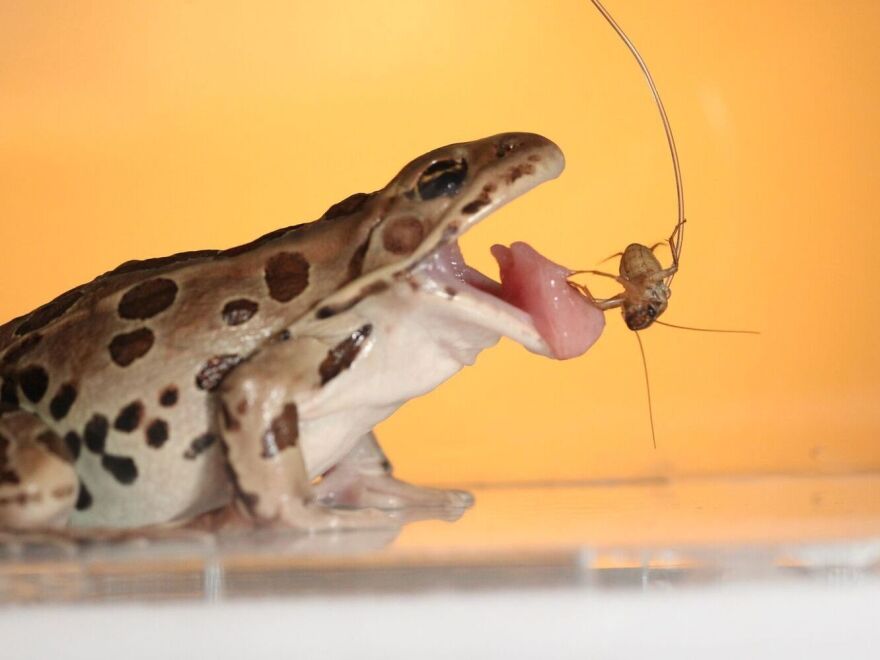Truth matters. Community matters. Your support makes both possible. LAist is one of the few places where news remains independent and free from political and corporate influence. Stand up for truth and for LAist. Make your year-end tax-deductible gift now.
To Catch Prey, Frogs Turn To Sticky Spit

Frog spit might be some of the catchiest spit on the planet.
That's according to new research on frog saliva, which shows that the sticky stuff is tailor-made to grab bugs.
It helps to explain how frogs can snatch flies out of the air at incredible speeds, and hang on to them using only their tongues.
Researchers had suspected a frog's saliva might be an important tool for hunting.
To find out, they needed quite a bit of frog saliva. "I actually got 15 frogs, and scraped their tongues for a couple of hours one night," says Alexis Noel, a PhD student at the Georgia Institute of Technology who led the study, "It was pretty disgusting."
The researchers then used high-speed photography and an instrument called a Rheometer to analyze frog saliva under prey-capturing conditions.
They found that when the frog's tongue hits the fly, the saliva actually changes properties in order to trap the bug on its tongue. Frog saliva is normally thick like honey. But when the frog hits an insect with its tongue, the force causes the thick saliva to liquefy. The watery saliva spreads all over the nooks and crannies of the insect's body, trapping the helpless bug. The saliva then becomes thick again, and the frog can pull it the insect into its mouth.
That puts frog spit in a unique class of fluids that can change properties. They're known as non-Newtonian fluids.
A common example is wall paint. Paint in the can is fairly thick, but when apply it to a wall with a paint brush, it becomes thinner. The force of the brush makes the paint liquefy and spread evenly across the wall. Remove the brush, and the paint becomes sticky again, staying in place on the wall.
So how does the frog get the insect off of its super-sticky tongue once it's in the mouth? With their eyeballs, of course.
"They actually bring their eyeballs into their mouth cavity and push down on the insect against the tongue," Noel says. The force from the eyeballs liquefies the saliva, releasing the bug from the tongue.
It's not all about the saliva, the frog's tongue also plays a big role. "The frog tongue is like a bungee cord, in that the tongue as it is pulling back actually stretches and deforms," Noel says. This stretching helps to keep the tongue in contact with the bug. The tongue is also extremely soft – 10 times softer than a human tongue. That softness helps keep the saliva thick as the bug returns to the frog's mouth.
The study, which was published Tuesday in the Journal of the Royal Society Interface is the first to study the viscosity of frog saliva using these techniques.
The authors suggest that frog tongues could one day help engineers design reversible soft adhesives that could work at high speeds. "Maybe even on a conveyor belt in a manufacturing plant, if you had to pick up very delicate components very quickly," says Noel.
The authors received help from the The Amphibian Foundation, a group that brings together top researchers in the field of amphibian biology, conservation, and applied science to address the causes of global amphibian declines.
Copyright 2023 NPR. To see more, visit https://www.npr.org. 9(MDA1OTI3MjQ5MDEyODUwMTE2MzM1YzNmZA004))








